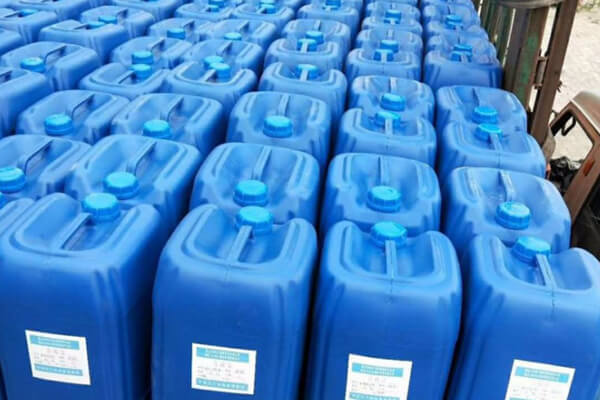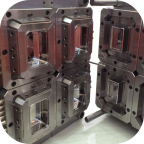Ultrasonic Solution Change Frequency: What You Really Need to Know
Browse Volume:80 Classify:Support
There’s something deeply satisfying about watching an item come out of an ultrasonic cleaner looking spotless—metal gleaming, grime gone, no brushing involved. The real magic lies in what’s happening beneath the surface. Ultrasonic cleaners don’t rely on brute force. They use sound—high-frequency sound waves, typically between 20 and 200 kHz—to create millions of microscopic cavitation bubbles in a liquid solution. These bubbles collapse with incredible energy, dislodging dirt, oils, oxides, and even biological contaminants from surfaces large and small.
But while the cavitation process gets the spotlight, it’s the cleaning solution that carries the real workload. It’s not just water in that tank. The right cleaning solution enhances cavitation effectiveness, suspends debris, prevents redeposition, and even protects delicate surfaces from oxidation or damage. Think of it like a conductor in an orchestra—facilitating harmony between sound and surface.
And like anything that works hard behind the scenes, that solution eventually gets exhausted. Knowing when and why to replace it is just as important as choosing the right cleaner in the first place.

Cleaning fluid
What’s in the Tank: Types of Cleaning Solutions and Their Lifespan
Ultrasonic cleaning solutions come in many varieties, and each type has its own typical usage lifespan. While the default assumption for many users is “just use water,” that approach only works for a narrow range of light-duty applications. Most professional—and even home—setups benefit from formulated cleaning concentrates that are added to water in small ratios.
Here’s where the differences begin to matter.
- Neutral detergents are the most common all-purpose choice, especially for plastics, metals, and general labware. They’re stable and have decent longevity under repeated cycles.
- Alkaline solutions are designed for removing oils, greases, and heavy residues. These tend to degrade faster once they’re saturated with contaminants.
- Acidic solutions are often used for oxide removal from metals or limescale from glass, but they’re more chemically reactive, meaning they have a shorter shelf life once mixed and used.
- Enzymatic solutions, used primarily in dental and medical applications, are highly effective at breaking down proteins, blood, and tissue—but they’re also the most perishable. Enzymes denature over time, and their effectiveness can drop sharply after just a few cleaning sessions.
Another key factor? Contamination load. The more soiled your items are—whether it’s carbon buildup from engine parts or plaque from dental tools—the faster your solution degrades. It absorbs and suspends these materials, and at a certain point, it becomes so saturated that cleaning efficiency begins to decline.
Some solutions contain anti-foaming agents or stabilizers to extend lifespan, but even those can only go so far. At some point, the solution stops helping and starts hurting. That’s why we come to the core question every ultrasonic cleaner user must eventually ask.
The Core Question: How Often Should You Change Ultrasonic Cleaning Solution?
There’s no single answer—but there are reliable guidelines that can help you make the right call based on your usage patterns.
For high-volume or critical applications, like medical instrument sterilization, most experts and equipment manufacturers recommend changing the solution after every cleaning session—no exceptions. This ensures sanitation standards are upheld and eliminates the risk of cross-contamination between patients or instruments.
In moderate-use environments, such as small dental offices, jewelry workshops, or electronics repair labs, the typical standard is to change the solution daily, or every few cycles—especially if the bath is visibly cloudy or contains fine particulate matter.
For home use, where users might be cleaning eyeglasses, retainers, jewelry, or small tools, the rule is more flexible. If the items are rinsed beforehand and aren’t heavily soiled, the solution can often last for 3–5 sessions before needing a change. But that’s assuming the solution is still clear, doesn’t smell off, and continues to perform.
Ultimately, think of it this way:
“If the water looks dirty, it probably isn’t cleaning anymore.”
Even if cavitation is still happening, a dirty solution can redeposit grime or reduce the efficiency of ultrasonic waves. And that defeats the entire purpose of ultrasonic cleaning.
What Happens If You Don’t Change It Often Enough
It’s tempting to keep reusing the solution, especially if it still looks okay. But appearances can be deceiving—and the consequences of not changing it often enough build up quietly.
First, there’s the efficiency loss. As particles and oils accumulate in the bath, they begin to dampen ultrasonic wave propagation. Cavitation becomes less intense, and contaminants become harder to dislodge—especially from intricate or porous surfaces. You’ll find yourself running longer cycles or seeing inconsistent results.
Then there’s the problem of redeposition. Dirty solution can actually cause loosened particles to cling back onto cleaned surfaces—creating a hazy film, residue, or speckling on metals and plastics. That’s not just frustrating; it’s counterproductive.
More seriously, bacterial growth can occur in solutions that sit for too long, especially enzymatic or organic-based formulations. In dental or lab settings, this becomes a real sanitation risk. Even in home use, a neglected tank can develop odor and even visible biofilm if left unchanged for weeks.
Some solutions can also become chemically unstable. For example, acidic solutions may start to corrode tank linings or damage items left soaking too long. Enzymes lose activity after repeated exposure to temperature shifts and contaminants. At that point, your cleaner becomes a dirty bath rather than a cleaning system.
To protect both your items and your machine, changing the solution before it degrades is essential.
How to Tell When It’s Time to Change the Solution
Not all ultrasonic cleaning solutions come with a built-in expiration timer, so users often rely on visual, tactile, and olfactory cues to decide when to refresh the tank. Fortunately, your cleaner gives you subtle (and sometimes not-so-subtle) signs that the solution has reached the end of its useful life.
The most obvious indicator? Visual changes.
Fresh solution—depending on its type—is typically clear or faintly tinted. As cleaning cycles progress, it becomes visibly cloudy or murky. If you start to notice suspended particles, discoloration, or oil films floating on the surface, it’s time for a change. Some users even report seeing bits of debris or fibers swirling in the tank—clear evidence that contaminants have outstayed their welcome.
But appearance alone isn’t always reliable. Sometimes the solution looks usable but has already started to fail. That’s where performance signs come in.
If you notice that your items are taking longer to get clean, or that they come out with a film or sticky feel, that’s a sign cavitation is no longer working optimally. For metallic surfaces, look for dulling or blotchy areas that weren’t there before. For plastic items, a cloudy finish can mean the solution is saturated and starting to redeposit grime.
And then there’s smell. While most solutions have little or no odor when fresh, an old bath can develop a stale, sour, or even slightly rancid scent—especially if organic materials or food particles were cleaned in it. That smell isn’t just unpleasant—it can indicate bacterial activity or chemical breakdown.
Other telltale signs:
- Foam or bubbles forming on the surface
- Sticky or oily residue on the sides of the tank
- A thin film settling on items immediately after the cycle ends
A good rule of thumb?
If you wouldn’t want to put your fingers in the solution, you shouldn’t put your tools in it either.
These sensory checkpoints—sight, smell, touch, and performance—help you stay one step ahead of solution failure.
Special Considerations for Different Cleaning Scenarios
Not all ultrasonic cleaning sessions are created equal. The ideal solution change frequency can vary dramatically based on what you’re cleaning and where you’re doing it. Let’s explore a few examples to illustrate how use cases shape expectations.
Jewelry Cleaning
For home users who clean personal jewelry—like rings, necklaces, or earrings—the cleaning load is typically light. These items may have skin oil, lotion, or light dust, but rarely industrial grime. If the jewelry is rinsed before cleaning, the solution can usually handle 3–5 cycles before showing degradation. However, cleaning items like oxidized silver or gemstones with polish residue will contaminate the solution more quickly.
Dental and Medical Instruments
Here, the bar is much higher. Regulatory bodies such as the Centers for Disease Control and Prevention (CDC) and the American Dental Association (ADA) recommend changing ultrasonic cleaning solution after every load to prevent cross-contamination between patients and ensure proper sterilization support. Enzymatic solutions used for these applications also degrade rapidly—often losing effectiveness after just 1 to 2 hours of active use.
Laboratory Glassware
In scientific labs, cleanliness is non-negotiable. Labs often use mildly alkaline or neutral detergents to clean beakers, pipettes, and flasks. If the glassware is rinsed before use and not heavily soiled, the solution may last for several cycles—but protocol usually dictates daily replacement regardless of appearance, especially when dealing with chemicals that may react with residuals.
Automotive and Industrial Parts
This is perhaps the most demanding use case. Greasy metal engine components, carburetors, or gearbox parts will cloud and saturate solution very quickly. In such cases, the solution may need to be changed after every cleaning session, especially if the oil forms a surface layer or if fine metal debris accumulates at the bottom.
Electronics and Circuit Boards
When cleaning printed circuit boards (PCBs), users often employ specialized non-ionic solutions. Since electronic parts are sensitive to residue, the solution must remain clean. For this reason, even home electronics repairers often change the bath every 2–3 uses to avoid redeposition and ensure no ionic contamination is left behind.
As you can see, context determines protocol. It’s not about over-cleaning or under-cleaning. It’s about matching the solution change frequency to the demands of your work and the sensitivity of the items being cleaned.
Best Practices to Extend the Life of Your Solution
While changing your ultrasonic cleaning solution regularly is essential, there are several smart habits that can help you extend its effective life without compromising cleaning quality. These aren’t shortcuts—they’re simply ways to work smarter, minimizing contamination and maximizing the performance of every batch you mix.
First and foremost, pre-rinse your items. This one step makes a huge difference. Rinsing or wiping off loose dirt, grease, or debris before placing items into the tank reduces the immediate contamination of your solution. Even a quick spray with warm water or a wipe with a microfiber cloth can help keep the bath cleaner, longer.
Second, measure your cleaning solution properly. Many users go overboard with cleaning concentrate, thinking “more is better.” But over-concentration doesn’t enhance cleaning—it can actually reduce cavitation efficiency and generate more foam, which dampens bubble formation. Always follow the manufacturer’s recommended dilution ratio (usually 1–5%), and mix thoroughly before use.
Temperature also plays a role. If your ultrasonic cleaner has a built-in heater, keep it within the recommended range—typically 40–60°C (104–140°F) depending on the solution. Overheating can degrade both the detergent and any organic components, especially enzymes, and may cause premature breakdown.
In higher-volume environments, consider using filtration or decanting systems. Some advanced ultrasonic cleaners allow for inline filters that constantly remove particulates from the solution. For others, manually decanting the solution through a fine mesh or filter paper after each use can keep sludge from building up.
Another key practice is to avoid cross-material cleaning in the same batch. For example, don’t clean greasy steel tools and fine jewelry in the same session. Mixing incompatible materials—especially when some are heavily soiled—causes rapid degradation and increases the risk of surface residue or damage.
And lastly, cover your ultrasonic tank when not in use. An open tank is an invitation for airborne dust, fumes, or debris to settle into your solution, especially if it sits idle between sessions.
By treating your ultrasonic solution as a limited but valuable resource, you’ll maintain optimal performance while reducing waste and cleaning time.
Should You Reuse Ultrasonic Cleaning Solution?
This is one of the most common questions among ultrasonic cleaner users—and the answer, as with many things, is: it depends.
Yes, ultrasonic cleaning solutions can be reused under certain conditions. If you’re cleaning items that are relatively clean to begin with, and the solution remains visually clear, there’s no harm in running it through multiple sessions. In fact, most household users routinely reuse their solution across several cleanings before noticing any decline in performance.
However, reusing solution isn’t always appropriate, especially in contexts where hygiene and cross-contamination matter. In dental clinics, tattoo parlors, or surgical centers, protocols usually mandate disposal after every session for both sanitary and liability reasons. Similarly, enzymatic solutions degrade rapidly after activation—usually within a few hours—so they’re not suited for extended reuse.
If you plan to reuse a solution, store it properly. Let it cool completely, then transfer it to a clean, airtight container if you need to clear the tank. Label the container with the date and type of solution, and inspect it before each reuse. If it looks cloudy, smells odd, or has visible particles floating inside—don’t gamble. Dump it.
One often overlooked tip: reuse only within the same context. Don’t use a solution for cleaning dental tools and then later for jewelry. Even if it looks clean, microscopic residues can linger and affect both the cleaning outcome and item safety.
Ultimately, reuse is a cost-saving and eco-friendly option—but only when done mindfully. The golden rule?
If you’re questioning whether the solution is still good, it’s probably time to change it.
Professional Recommendations and Research Insights
While user experience and intuition are valuable, nothing replaces guidance grounded in research and professional standards—especially when it comes to something as chemical- and hygiene-sensitive as ultrasonic cleaning.
Let’s start with manufacturers. Major brands like Branson, Crest Ultrasonics, and Elma emphasize that solution life depends on contamination load, but they generally recommend changing the solution at least once daily in professional settings, and more often when heavily soiled items are cleaned. For enzymatic and acidic solutions, they suggest even more frequent replacement due to the fast breakdown of active agents under heat and cavitation exposure.
Crest Ultrasonics, for instance, notes in its cleaning solution guide:
“Cleaning efficiency is highly dependent on the quality of the solution. Solutions that appear visibly clear can still be saturated with dissolved soils. Daily replacement is recommended, with more frequent changes depending on the cleaning application.”
The Centers for Disease Control and Prevention (CDC), in its Guidelines for Disinfection and Sterilization in Healthcare Facilities, recommends that ultrasonic cleaning solutions be discarded immediately if visibly contaminated, and replaced at least daily in dental and surgical environments.
Academic literature supports this as well. A 2021 study published in the Journal of Hospital Infection found that reused ultrasonic cleaning solutions exhibited a significant decrease in cleaning efficacy after just three cycles of high-soil exposure, especially when dealing with organic contaminants like blood proteins. Read the study here ›
Additionally, dental hygiene programs worldwide emphasize “clean solution, clean tools.” The American Dental Association (ADA) advises against reusing solution across different patient loads, noting the risk of bacterial biofilm growth if solutions are left overnight or used beyond their effective window.
From a broader perspective, efficiency, hygiene, and machine longevity are all optimized when solution changes are handled proactively. Old, contaminated fluid not only reduces cleaning quality but also causes sediment buildup in the tank, potentially damaging the ultrasonic transducer or heating elements over time.
So while users may be tempted to “stretch” a solution for a few more cycles, both the science and the professionals behind the machines agree: when in doubt, change it out.
Final Thoughts: Clean Solution, Clean Results
Ultrasonic cleaning is one of the most remarkable technologies for maintaining precision, clarity, and hygiene across countless industries—from medical labs to jewelry stores to hobbyist workbenches. But even the best ultrasonic machine in the world can’t deliver optimal results if you’re using tired, dirty, or chemically exhausted cleaning solution.
The solution is the silent workhorse. It amplifies cavitation, suspends loosened grime, and protects delicate items from scratches or recontamination. But like anything that does its job well, it has limits. Over time, it gets saturated, loses effectiveness, and can even become a breeding ground for bacteria or corrosion.
Learning how often to change your ultrasonic cleaning solution is not about following a rigid schedule. It’s about developing awareness—of the signs, the usage patterns, and the type of materials you’re cleaning. If the solution looks cloudy, smells strange, or doesn’t clean as effectively as before, it’s already past its prime.
Changing the solution might feel like a small task, but it has big consequences. It protects your tools. It ensures proper hygiene. It maintains the longevity of your equipment. And most importantly, it keeps your cleaning process efficient, safe, and reliable.
So yes, it’s worth it—every single time.
 Granbo Ultrasonic
Granbo Ultrasonic














